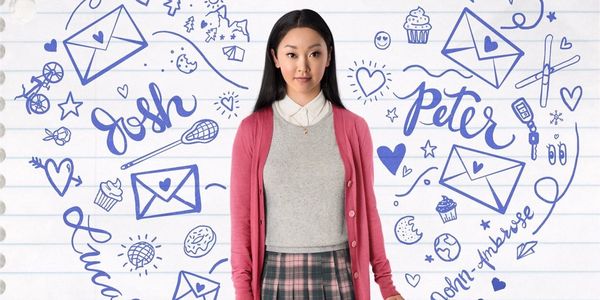
We all need to watch rom-coms to keep our hearts alive and remember the magic of teenage love. “To All the Boys I’ve Loved Before” is the romantic comedy my heart needed in this white-washed film industry. It brought me back to being a brown girl hopelessly in love with high school heartthrobs – each of them different, significant and all-consuming experiences.
The movie is based on the novel of the same name by Jenny Han and follows Lara Jean Song Covey (Lana Condor), who is 16 years old, Korean American, witty, full of opinions and a little awkward. She dreams about love but sticks to reading historical romance novels. In classic teenage girl fashion, Lara Jean writes love letters to all her crushes that she never sends – that is, until her younger sister secretly sends them for her. Over the next hour and a half, Lara Jean goes through a journey filled with laughter, teenage awkwardness, self-discovery, and love.
In the vast majority of romantic comedies, the female lead is presented as “the manic pixie dream girl.” She will teach our broody, broken-hearted man to love, to embrace life and dance at the wedding even though he’s shy. However, Lara Jean’s and Peter’s relationship flips that trope around. While Korean and Indian cultures are different, seeing an Asian-American lead have a romance with the classically attractive white boy is significant for Indian-Americans as well.
I remember being in high school and being told that I would be more attractive if my skin was lighter and I wasn’t as hairy and that I had a sharp understanding that I wasn’t as comfortable with my sexuality. Then comes Lara Jean – she loves reading and is scared of her emotions and Peter encourages her to open her heart. He pushes her to fully embrace life and asks her the hard questions. But most importantly, he always meets her where she’s at and is able to unpack his own flaws and experiences. If I had seen this movie at 16, I would have had a model of a healthy relationship that related to me. Not only was this movie a win for representation, it was a fantastic romantic comedy that made me reflect on my own relationships.
[Read More: Why “Crazy Rich Asians” Matters for South Asians, Too]
We date, we break up, we hook up, we go our separate ways. As the cycle goes on, inevitably, we put up walls. The small moments in this movie made me jump around in my bed and smile all to myself, like when Peter drives across town to get her favorite Korean yogurt and how he writes her notes every day. This movie reminded me of how beautiful love is, and how we have to let go of our fear and let ourselves jump into the heart-racing wonder that is life. Whenever Lara Jean resisted her own feelings and emotions, I wanted to scream at her to let herself be in love. But then I realized those are things I have to yell at myself too. Even Lara Jean’s smallest fantasies reminded me how wonderful it is to obsess, to feel giddy. Early on in the movie, we hear how she imagines running her fingers through her crush’s hair, feeling his arms around her. When was the last time you relished in small moments like that and let yourself daydream?
There is nothing like the feeling of your first high school love or secret crush – but we can all feel that way again. “To All The Boys I’ve Loved Before” has made me dive deep and examine my own relationships. It’s been a reminder that I need to reopen my heart and bring a little bit of that “high school love” magic back into my life, and I hope it brings back those feelings of magic for everyone else, too.




